As spring approaches, the photography bug begins to stir inside me. I want to photograph the sunrises. I want to photograph the icy foliage. I itch to get outside. To combat this bug, I spent this weekend at the Rocky Mountain School of Photography “photo weekend” in downtown Portland.
The Rocky Mountain School of Photography is based in Missoula, Montana. It offers photo weekends — a series of workshops on various photographic topics — throughout the country, as well as various week-long workshops throughout the world. (Workshops this year include trips to South Africa; Victoria, BC; New Zealand; and the Oregon Coast.) The Rocky Mountain School of Photography is best known, however, for its eleven-week summer intensive career training program. (I have a friend who quit her job to do this program; she said it was the best thing she’s ever done. It’s something I’d like to do some day if I can afford it. The program costs $7200!)
The photo weekends offer a quick taste of their extended content, condensed for hobbyists such as myself. Classes are taught for groups of about fifty students, ranging in skill from novice to professional. Here are the courses that were offered this weekend:
The classes I attended are indicated by italics.
Session One
Photography Basics taught by Susanna Gaunt
Understanding Light taught by Elizabeth Stone
Zone System for Color taught by David MarxSession Two
Understanding Your Digital SLR taught by David Marx
Creative Techniques in Color taught by Elizabeth Stone
Vacation and Travel Photography taught by Susanna GauntSession Three
Macro Photography taught by Elizabeth Stone
Filters and White Balance taught by David Marx
Sports and Motion taught by Susanna GauntSession Four
Composition taught by Elizabeth Stone
Enhancing Your Digital Images taught by David Marx
Photographing Kids taught by Susanna GauntSession Five
Low Light and Night Photography taught by Elizabeth Stone
Sunrises, Sunsets, and Flowing Water taught by Susanna Gaunt
Printing and E-mailing Your Photos taught by David MarxSession Six
Group Critique of Student Photos
The classes I attended were a mixed bag. The instructors were certainly knowledgeable — no question of that — but sometimes the subject matter seemed irrelevant (to me) or the presentation ineffective. For example, the Creative Techniques in Color class wasn’t about using color to enhance your photos; it covered infrared photography and multiple exposures and related topics. If I’d realized this in advance, I would have selected a different topic. The Sports and Motion class had potential, but the lecture followed our workbook almost verbatim, and no photographic examples were provided until the very end of the session.
However, the Enhancing Your Digital Images class was worth the price of admission all by itself. That session was fantastic, peeling away some of the mysteries of Photoshop in just two hours. (I now know what Levels are and what the Curves tool is for!) I’ve tried to learn Photoshop from books before, but they just cannot compare to what I learned yesterday. It’s clear to me now that I need to find a Photoshop class at a community college or an art school. (Or, if I can scrape together a thousand bucks, to attend a RMSP workshop on Photoshop in Missoula.)
One of the things I loved about the weekend were the little tidbits of advice the instructors dispensed here and there. Some of this goes against conventional wisdom, against the stuff photography students hear all the time. For example, we’re told from the start to always have UV/haze filters over our lenses — “It’s better to scratch a $10 filter than to scratch a $1000 lens.” I heard each instructor pooh-pooh this notion. Here, then, is the heart of this entry: little tidbits of advice gleaned from the Rocky Mountain School of Photography photo weekend.
- If you have a favorite place to photograph, keep going back. Photograph it under different conditions: different times of day, different seasons, etc.
- Any time you use a filter of any sort, you are compromising quality, losing sharpness. Only use filters when you need them. You paid big money for the glass in your lenses, but the glass (or plastic) in your filters is cheap stuff.
- If you’re using white balance on your digital camera, the only filters you need are a polarizer and a neutral density filter. Warming and cooling filters are redundant, as those functions are handled by your digital camera’s white balance settings.
- Student: “Do you use U/V filters?” “No! No! No! Don’t use U/V filters. They’re bad! Haze filters are junk. If you want to cut through haze, put on a polarizer.” Use a lens shade to protect your lens, not a haze filter.
- Always use a lens shade. It prevents flare. It improves the quality of light. It protects the lens. (Use the lens shade instead of a cheap filter.)
- If you like water, get a cheap $8 underwater camera from Target, then have the film cross-processed and pushed three stops.
- Regarding the oft-cited rule that one ought to mostly do photography in the morning and evening (because midday sun is too harsh). “There is no bad light. It’s just a different quality of light.” (Which is not to say that you’re going to get good results photographing architecture at noon, just that you won’t necessarily get bad results.)
- Learn to use fill flash, especially to provide catchlights in outdoor portraits. A catchlight makes the subject seem more alive.
- Regarding one of my pet peeves, the ubiquity of the 8×10 format and the difficulty in making 8×12 formats: “I cannot believe that we, as photographers, have not rebelled. 8×10? Please!” A 35mm image is approximately 1.5 x 1 inches, or a 3:2 aspect ratio. This prints full frame on an 8×12. An 8×10 print actually lops off 17% of your image.
- Most people (including me) use too much sharpening in Photoshop. Sharpening should be subtle. If somebody says to you, “Nice unsharp mask,” you know you’ve used too much.
- Freezing film retards the aging process.
Though I found parts of the weekend dull and uninteresting, I’m glad I took the workshop. I will be a better photographer for it. (Actually, I’ll be a more efficient photographer — I didn’t actually learn anything to help improve the quality of my images, just to improve my workflow.)
Another keen thing I got from the weekend is that everybody’s photographic sensibilities are different. Sure, there are commonly accepted guidelines for producing photographs that appeal to a broad audience, but each person is always going to have a specific taste. One of the instructors loves to work in the abstract, and is quite fond of photographs that would bore most people to tears. This was a revelation to me. I, too, love to work in the abstract, but I don’t do it often because (a) I don’t have the training and (b) nobody I show the stuff to seems to like it. I like it, but I always figure there’s something wrong with the photos when everybody else blows it off. This weekend made me realize that it’s okay to be different, okay to develop a personal style, okay to to make images that only I like. Images like these:
I’ve never posted the introduction to photography entry I wrote last summer. I finished about 90% of it, but got sidetracked before it was done. Maybe I should work on it so that I can share my (limited) photographic wisdom before spring and summer are upon us.
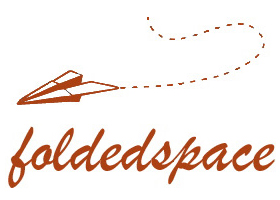
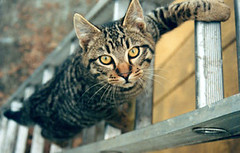
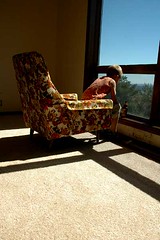

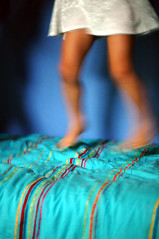
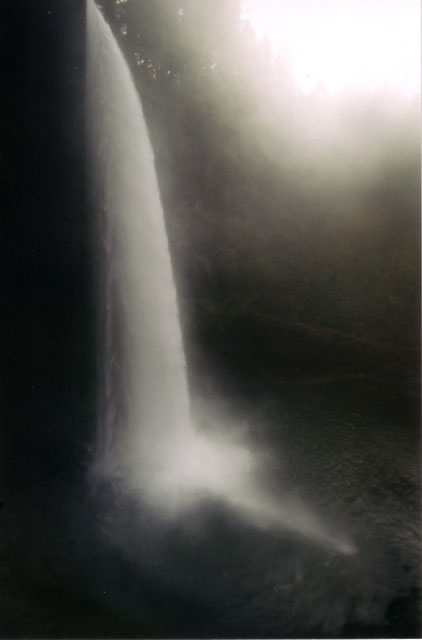

J.D., check out Scott Kelby’s book “The Photoshop CS2 book for digital photographers”, its a fantastic source for people who want to use photoshop without getting too technical. I’ve found that by following the examples in his book that I gain a better understanding of Photoshop than I did with Adobe’s official textbook for it! Also, I’ve never considered shooting without my uv filter, I’m going to try that out and see how much difference it makes in my images.
i fell in love with photoshop the moment i opened it. before that i only had ms paint to edit photos…not fun. i took a class in high school that we learned how to use photoshop in. now im going to school for advertising design because of that. guh. i love it. oh and i love your cats. i’ve always been a cat person and really enjoy your stories about the stuff they get into. i just recently lost a cat i’d had since i was 4. fifteen is a pretty decent age for a cat. so it’s been kind of a therapy to read about yours. take care.
Your abstract images are very interesting and you should certainly continue to do more. I shoot abstracts as well – it may seem self-indulgent, but I try only to do work that pleases me and if others like it, well, that’s great too.
Love the corn leaf photo. Thanks for the info…I’m looking into taking a RMSP class and need to find out more before putting down that kind of $$!